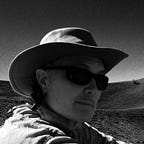Sugarloaf Island
When I show Californians this photo, they assume it’s somewhere on the Big Sur coast, if they think it’s in California at all; several have asked if it’s somewhere in Scotland. Both responses are understandable, but it’s actually California’s Lost Coast, a different place entirely, one that far fewer Californians have even heard of, let alone visited.
I’ve been a big fan of the Lost Coast ever since I first drove between Ferndale and Shelter Cove a couple of decades ago (just to see what was there). It’s rugged and undeveloped in ways that are unknown in most of the rest of coastal California. Mattole Road, the main road through the area, is an often badly-potholed two-lane blacktop that connects a handful of small settlements like Petrolia and Honeydew (see photo below for a taste of Mattole Road), and most of the other roads are winding dirt tracks through the mountains and forests.
The geography is mostly mountainous, with cliffs right down to the Pacific at the coast, and the vegetation varies from lush redwood forests to bare coastal heath. The beaches are mostly inaccessible without long hikes from the road or along the coast (I’ve done a few — you need to be aware of the tides on some of them so you don’t get cut off by the waves smashing against the unpassable cliffs as the tide rises. But then there are worse places to be stuck (comfortably) for six hours waiting for the tide to retreat…). Large stretches of the coast have no road along them at all. Unlike down south along the Big Sur coast, where California Highway 1 hugs the cliffs the entire way, Highway 1 just gives up and turns inland to merge with US 101 a long way from the coast as it goes north before the Lost Coast starts. It never reappears.
One of the places where there is some sort of road right next to the ocean is the few miles of Mattole Road between Cape Mendocino and where the road turns inland towards Petrolia. The dominant feature here for me is Sugarloaf Island, a striking conical rock that rises a couple of hundred feet up out of the rough Pacific just off Cape Mendocino; you sort of can’t miss it as you drive along unless the fog’s rolled in (as it does). I’ve tried for years to get a good photo of it, to capture that ruggedness and remoteness, to get that weird light that often washes out the dominant green and brown and (sometimes) blue, to get that treeless pyramidal shape sparsely covered with windblown vegetation.
This is my best attempt so far, I think (and, ironically, given my desire to get those washed-out colors, it’s in black and white). It was taken at sunrise with my little Sony point and shoot sometime September as I drove down the coast to Mattole Beach one morning. I was on my way to hike out of Mattole Beach to Punta Gorda light (one of those tide-sensitive hikes), and the sky was unusually clear. I could see the sunrise about to strike the rock from the east as I tried to get down the Cape Mendocino grade on Mattole Road before the sun rose completely and I missed it all. Well, I didn’t get the shot I wanted — I was at least five minutes too late for that — but it’s good enough. And given the remoteness of the place (it’s a long day’s drive from where I live), the changeable weather there, and my lazy disinclination to get up early just get a particular photo (see e.g. “Sunrise, Barstow” for another image it took me years to be able to get out of bed in time to finally get…), it’s probably going to have to do for another few years at least.
And Mattole Road? This is what it looks like for much of its length (with Sugarloaf Island in the background):
Yes, that’s the main road (and only main road!) through the region. The roads don’t get much better than this on the Lost Coast….
